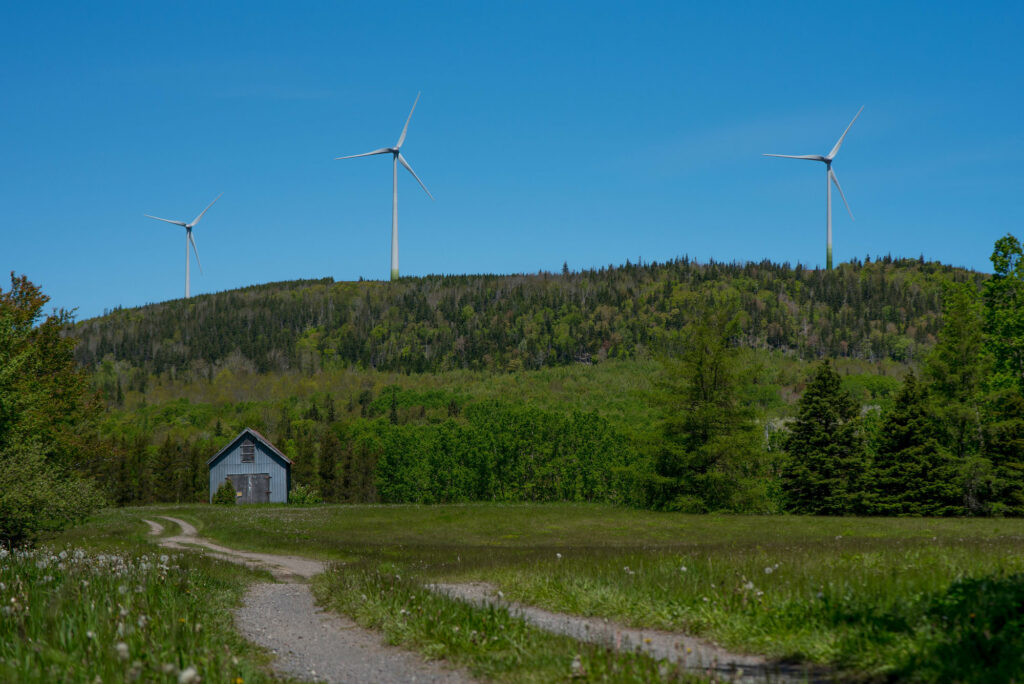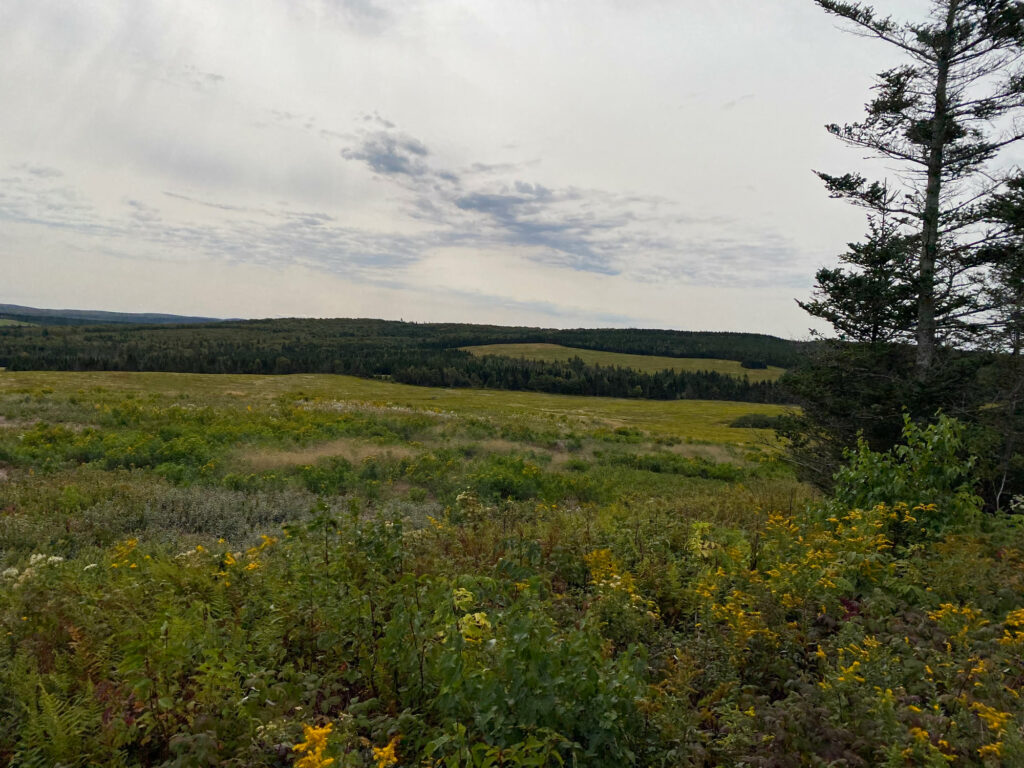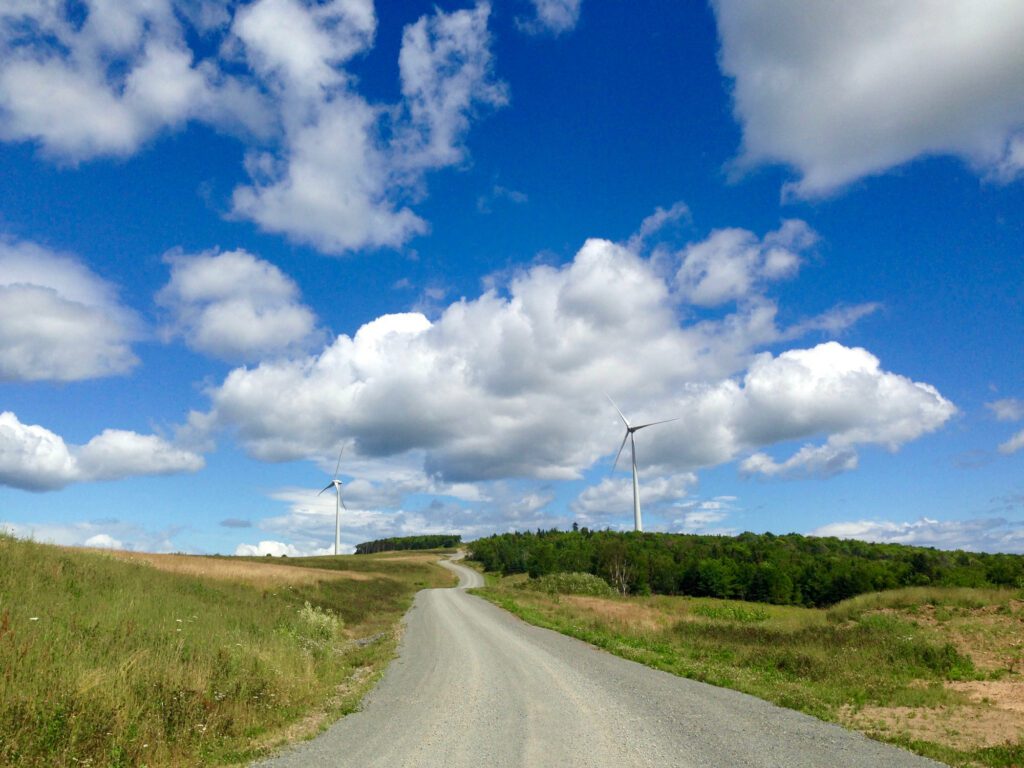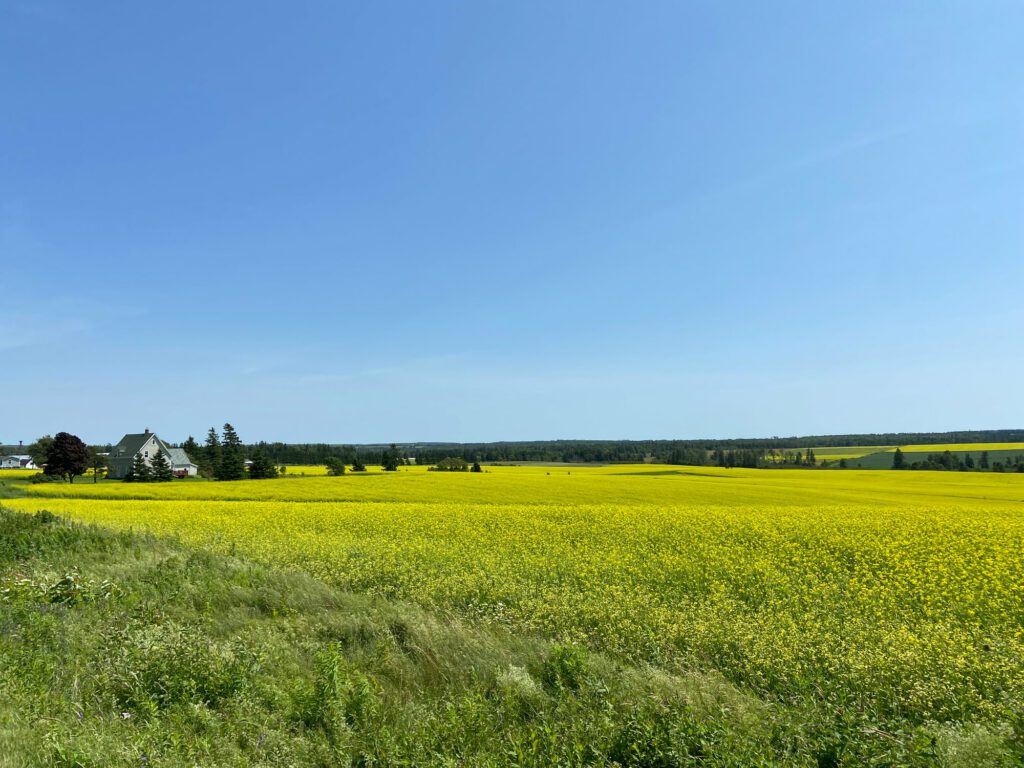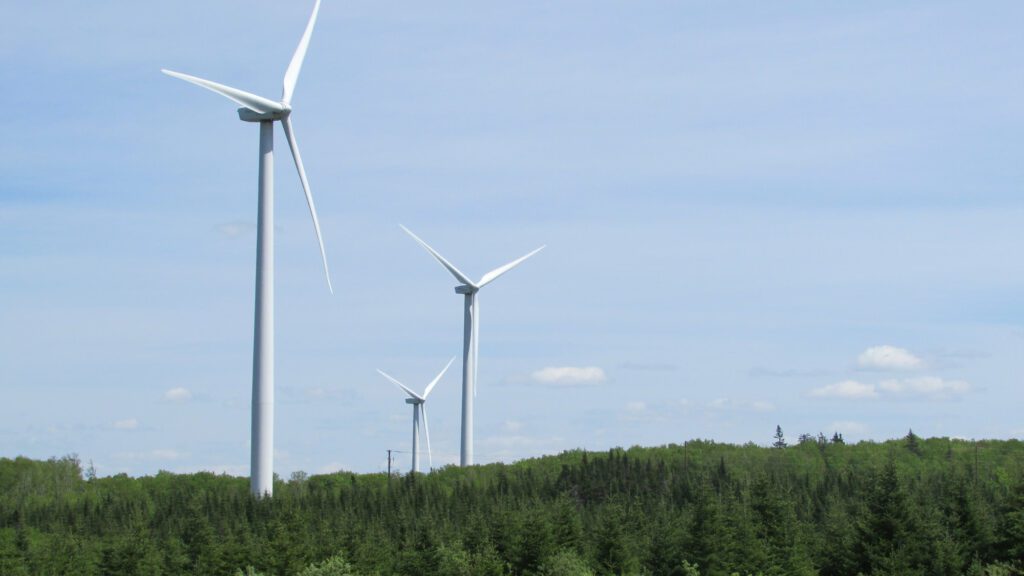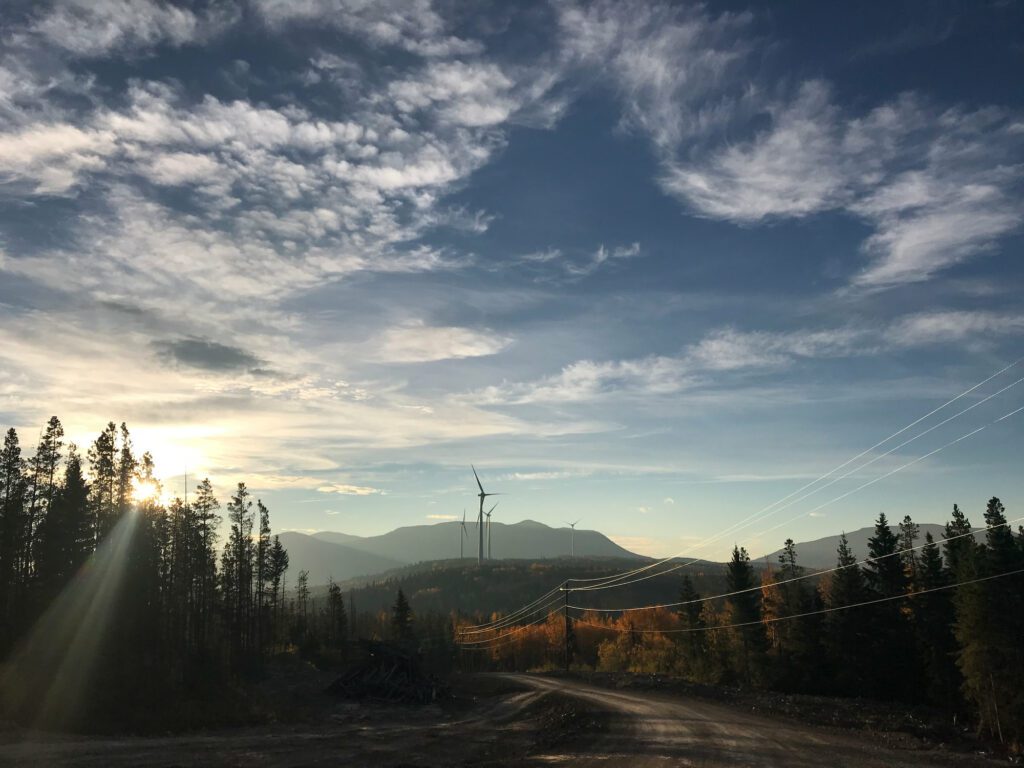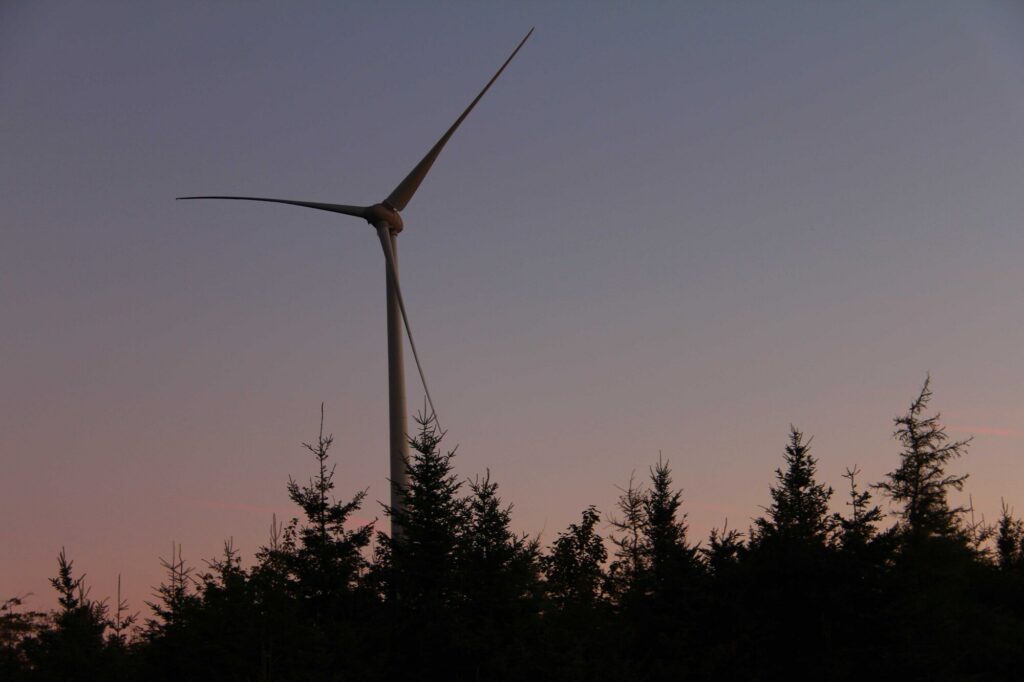Welcome to the official Aulds Mountain Wind Farm website! This website has been set up to provide information for the community and stakeholders on the Aulds Mountain Wind Farm. As of January 2019, since the Aulds Mountain Wind Farm was commissioned in Spring 2015, it has generated a total of 68.08 GWh of clean renewable energy.
About The Project
The proposed Aulds Mountain Wind Farm is located near the community of Piedmont in the Municipality of Pictou County. The project site is approximately 20 km east of New Glasgow and 6 km south east of Merigomish.
This capacity is estimated to supply approximately 1,862 homes with electricity while offsetting 13,212 tonnes of carbon dioxide annually.\
Natural Forces is currently proposing an expansion of the Aulds Mountain Wind Farm. This project is called the Aulds Mountain III Wind Project – more information on this expansion can be found here!
Why Here?
When developing a wind project, it is crucial to find the best suitable location and community to host it. To do so, there are four main factors to consider during the site finding phase of development:
- Wind resource
- Distance to existing electrical and civil infrastructure
- Environmental sensitivity
- Socio-economic concerns.
Nova Scotia has excellent wind resources, so generating electricity is feasible in many locations around the province. Factors other than the strength and consistency of the wind must be taken into account when considering a site, such as proximity to the electricity grid, road access, ecology, archaeology, and cultural significance, proximity to residential dwellings, and health concerns.
The location of the Aulds Mountain Wind Farm was selected after a thorough review of all of these factors.
Project Updates
September 2016: As of September 1st, 2016 Auld’s Mountain Community Wind Farm has produced 24.18 GWh of clean renewable energy.
December 2015: Auld’s Mountain Community Wind Farm produced over 10 GWh since opening!
Spring 2015: Aulds Mountain Community Wind Farm is now energized. Operation is now underway and the turbines are now feeding electricity into the grid.
Winter 2014/2015: The erection of the two turbines is complete. The cranes will be disassembled and will be removed from the site. Although the turbines may look like they are ready to turn with the wind, there is a lot of work to do before they can be connected to the existing electrical grid and therefore will take a while longer before it can produce electricity.
Summer 2014: Natural Forces will be starting construction of the Wind4All Communities II Aulds Mountain Wind Farm. Construction activities will include concrete pour for the foundations and installations of the wind turbine tower, generator and rotor.
Spring 2014: Site preparation continues, with construction slated to begin in the summer. The SODAR unit continues to provide Natural Forces engineers with high-quality wind data!
Winter 2013/2014: Road upgrades, excavation, and site preparation has begun while our SODAR unit continues to monitor wind trends in the area!
Fall 2013: The wind monitoring mast and SODAR unit continue to monitor wind patterns and gather data for the design team! An environmental assessment conducted for the Aulds Mountain Wind Farm in accordance with the Environmental Assessment Act was approved by the Minister of Environment on December 16th 2013. For more information regarding the environmental assessment click here.
Summer 2013: A SODAR unit has been deployed in conjunction with the existing wind monitoring mast to further monitor wind patterns at the proposed site!
Winter 2012/2013: The wind monitoring mast has been successfully deployed to gather valuable wind measurement data.
Community Engagement
Natural Forces is committed to establishing positive relationships with the community by means of public meetings and community consultation. In doing so, we will address concerns pertaining to this proposed development raised by local residents and community members. The following is an estimated projected time line for the public consultation that will take place in accordance with the following schedule:
- June 2011 – Start of discussion with local landowners, planners and council
- December 2011 – First public information session
- May 2012 – Community Feed-In Tariff Approval
- Sept 2013 – Second public information session
- Jan – Mar 2014 – Investment seminars
- Spring 2014 – Newsletter released
- May 2014 – Construction notice in Councilor Fraser’s newsletter
- Spring 2014 – Construction start
- March 2015 – Construction finalized
- May 2015 – Project commissioning
- Summer 2015 – Post construction avian and bat study
- Summer 2016 – Post construction avian and bat study
Throughout the project’s development, construction, operational, and decommissioning phases, Natural Forces is committed to:
- Constant consultation with residents of nearby communities
- Continuous discussions with the local councilors, MLAs and business owners
- Informing the public of the project’s progress using this website, newsletters, public open houses and press releases.
Community Benefits
- An increase in demand for local goods and services during the feasibility and construction phases of development.
- The creation of jobs within Municipality of Pictou County during the construction phase.
- The creation of a small number of permanent positions during the wind farm’s operational life for maintenance.
- Renewable energy supply in the Pictou region to help meet growing energy demand.
- Additional revenue for the Municipality of Pictou County through the payment of annual property taxes by the project proponent, which will benefit all residents of the municipality.
- Help achieve government renewable energy targets. Targets are to produce 25% renewable energy by 2015 and 40% by 2020
What is the process?
1
Development
- Assess the wind resource
- Survey for environmentally sensitive features
- Optimize turbine location to capture the wind efficiently and minimize impact on sensitive features
- Begin consultation with regulators and the public
- Conduct and present the Environmental Assessment for environmental approval
- Apply for road, work and construction permits
2
Construction
- Clear trees for roads and turbine pads
- Build access roads and pad areas
- Pour the turbine foundation
- Assemble the wind turbine
- Connect to NS Power’s electrical grid
3
Operation
Current Stage
- Commission the wind turbines to start producing power
- Conduct post-construction wildlife monitoring
- Monitor remotely for real time alerts when additional maintenance is needed
- Operate for 20 years
4
Decommission or Retrofit
- Assess wind turbine after 20 years
- Decommission wind turbines in 3-6 months
- Reclaim the site to its former state OR
- Receive approvals and permits to retrofit the turbine to continue harnessing energy
Environmental Impact Assessment
The Environmental Assessment (EA) for the Aulds Mountain Wind Farm has been approved by the Minister of Environment on December 16th, 2013. The EA was registered on October 25th, 2013 and was open for public comment until November 24th, 2013. An environmental assessment (EA) is a tool that is used to predict and evaluate the environmental effects of the proposed Aulds Mountain Wind Farm to determine the acceptability of the project. The EA has been conducted in accordance with the Nova Scotia Environmental Assessment Regulations.
An electronic version of the EA is available on the EA Website or by selecting the following links:
Post-construction Monitoring
Once construction was finalized and Aulds Mountain Wind Farm was fully operating, a bird and bat study was conducted onsite to determine the effects of the Wind Farm on the bird and bat community. The methods used, closely followed the protocols established by the Canadian Wildlife Service and the methods of analysis, which it recommends. In addition, there is also a grid searching method for the gravel pads, which surround the turbines. Each grid used represents a square covering a distance of 112 metres from the turbine base. Carcass search started from the beginning of autumn migration in mid-August 2015 and 2016. The searches took place three times a week. No birds or bats were found during both years of monitoring. The full report can be found by following the link bellow: 2016 Post Construction Monitoring Report 2015 Post Construction Monitoring ReportFrequently Asked Questions
- New energy generation helps to meet the growing demand for electricity.
- Increased diversity of supply increases security of supply.
- Aids in the prevention of biodiversity loss caused by unchecked world temperature rises.
For more information on wind energy in Canada, visit: www.canwea.ca.
Wind turbines start operating at wind speeds of 4 to 5 m/s (14 to 18 km/h) and reach maximum power output at around 15 m/s (54 km/h). In gale force winds (25 m/s, 90+ km/h) wind turbines shut down to reduce unnecessary wear and tear. For more information on wind energy, see the CanWEA factsheets on wind energy.
The greatest impact to wildlife is climate change, and wind energy is an important contribution to combating it. During the development of a wind farm, an Avian Impact Assessment Report is created and submitted as part of the project’s Environmental Assessment. The report typically contains detail on the avian monitoring methodology used, the associated data recorded, and the conclusions drawn.
Wind farms are popular with farmers because their land can continue to be used for growing crops and livestock grazing. Sheep, cows, and horses are not disturbed by wind turbines and often enjoy the shelter that turbine towers can provide from the wind and sun. Likewise, working dogs are also unaffected by wind turbines.
Since wind turbines are large mechanical equipment, they can be expected to produce some noise. However, as wind turbine technology has advanced, the sound emitted by wind turbines has decreased. The most up-to-date turbine technology has made the mechanical noise almost obsolete, resulting in only the interaction of the air and the turbine parts producing noise. This noise decreases as the radial distance from the turbine increases. To relate this, the compressor of a refrigerator produces 40-45 dB of noise. According to the Government of Nova Scotia, a wind energy project would have a noise level of between 35-45 dB at 350 meters away (Check out the Energy Nova Scotia Wind Page for more information). Federal and provincial jurisdictions establish minimum distances from turbines to occupied dwellings to minimize this noise.
A study done by Health Canada in 2014 investigated the health effects of wind turbine noise. This study found that wind turbine noise was not associated with self-reported slip, illness, or stress levels. The summary of these results can be reviewed on the Health Canada Environmental and Workplace Health page.

